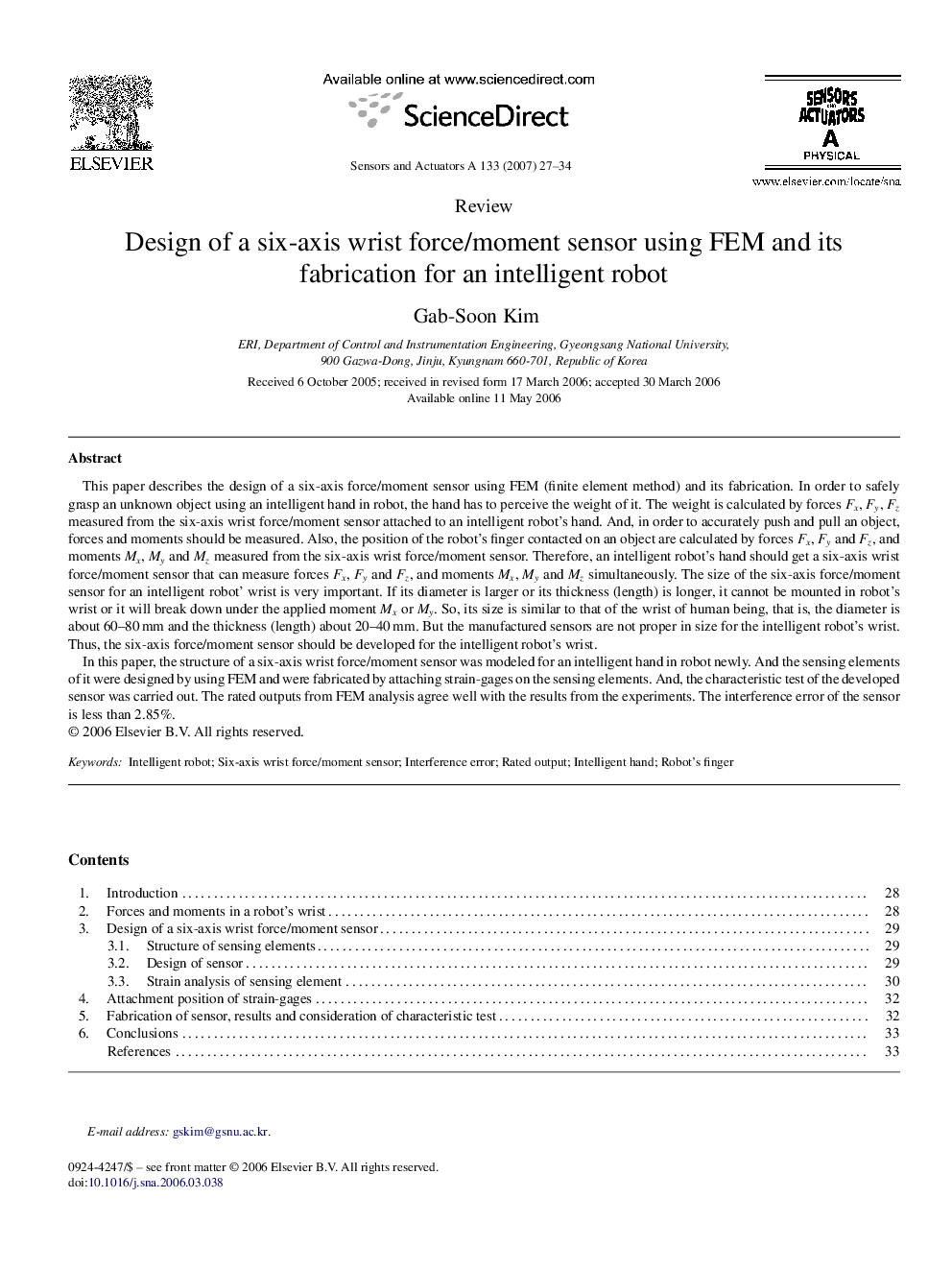| کد مقاله | کد نشریه | سال انتشار | مقاله انگلیسی | نسخه تمام متن |
|---|---|---|---|---|
| 749967 | 894866 | 2007 | 8 صفحه PDF | دانلود رایگان |

This paper describes the design of a six-axis force/moment sensor using FEM (finite element method) and its fabrication. In order to safely grasp an unknown object using an intelligent hand in robot, the hand has to perceive the weight of it. The weight is calculated by forces Fx, Fy, Fz measured from the six-axis wrist force/moment sensor attached to an intelligent robot's hand. And, in order to accurately push and pull an object, forces and moments should be measured. Also, the position of the robot's finger contacted on an object are calculated by forces Fx, Fy and Fz, and moments Mx, My and Mz measured from the six-axis wrist force/moment sensor. Therefore, an intelligent robot's hand should get a six-axis wrist force/moment sensor that can measure forces Fx, Fy and Fz, and moments Mx, My and Mz simultaneously. The size of the six-axis force/moment sensor for an intelligent robot’ wrist is very important. If its diameter is larger or its thickness (length) is longer, it cannot be mounted in robot's wrist or it will break down under the applied moment Mx or My. So, its size is similar to that of the wrist of human being, that is, the diameter is about 60–80 mm and the thickness (length) about 20–40 mm. But the manufactured sensors are not proper in size for the intelligent robot's wrist. Thus, the six-axis force/moment sensor should be developed for the intelligent robot's wrist.In this paper, the structure of a six-axis wrist force/moment sensor was modeled for an intelligent hand in robot newly. And the sensing elements of it were designed by using FEM and were fabricated by attaching strain-gages on the sensing elements. And, the characteristic test of the developed sensor was carried out. The rated outputs from FEM analysis agree well with the results from the experiments. The interference error of the sensor is less than 2.85%.
Journal: Sensors and Actuators A: Physical - Volume 133, Issue 1, 8 January 2007, Pages 27–34